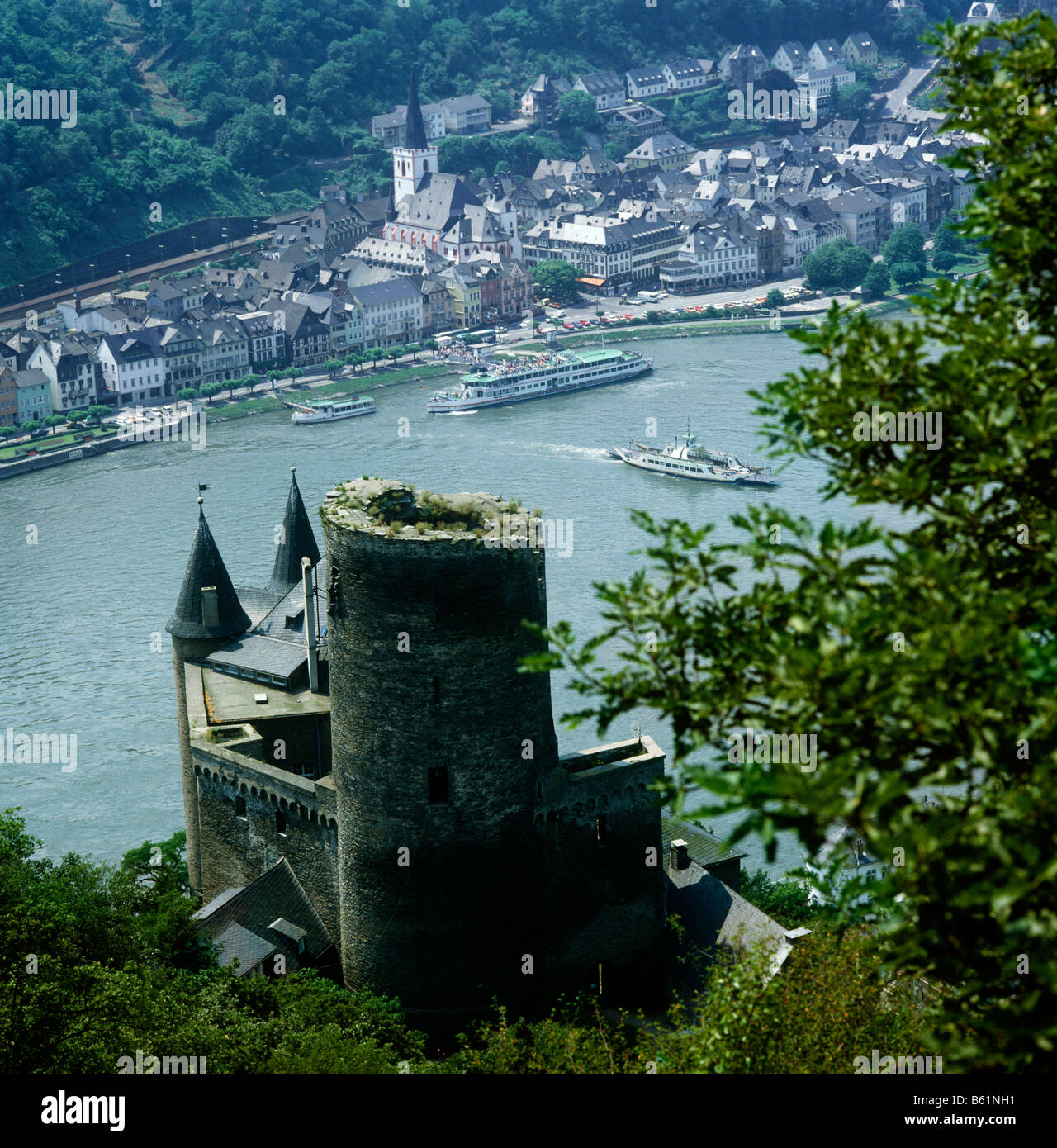Burg Katz on the Rhine with St Goar behind it,Germany.In 1435 the Counts of Katzenelnbogen were the first to plant Riesling wine

Image details
Contributor:
Tom Hanley / Alamy Stock PhotoImage ID:
B61NH1File size:
48.3 MB (2.8 MB Compressed download)Releases:
Model - no | Property - noDo I need a release?Dimensions:
4080 x 4141 px | 34.5 x 35.1 cm | 13.6 x 13.8 inches | 300dpiDate taken:
2006Location:
Burg Katz on the Rhine, GermanyMore information:
Burg Katz on the Rhine with St Goar behind it, Germany. The full name of this citadel is actually "Neukatzenelnbogen" in deference to the Count von Katzenelnbogen who built the castle at this spot in the later half of the 14th Century. In English "new castle of Katzenelnbogen." Whether English or German this is a mouthful. Locals call it Burg Katz. This is Castle Cat so it's indelibly tied another local castele, Burg Maus, which means Castle Mouse. Burg Katz served both economic and military purposes. Then as now, the Rhine provided a transportation corridor through the German countryside. This was an ideal spot to extract fees from merchants moving along the river or tolls from passengers wanting to cross between St. Goarshausen on the eastern bank and St. Goar on the west. Militarily, this was a well-protected niche upon a steep rock wall. It also contributed to a key defensive perimeter when combined with other nearby fortifications. Spaniards conducted a siege in 1626, and the French tried to capture it in 1684 and again in 1692. In 1795 the castle passed from the house of Hesse-Nassau to Hesse-Kassel, and then to the French in 1801. Napoleon chose to blow it up in 1806 and it remained in disrepair well into the late 19th Century when popular interest in castles grew among members of the upper class. It is from these photographs that the "restoration" was intended, how a castle should appear rather than an accurate rendition of the original 14th Century structure. In 1435 the Counts of Katzenelnbogen were the first to plant Riesling in their vineyard.